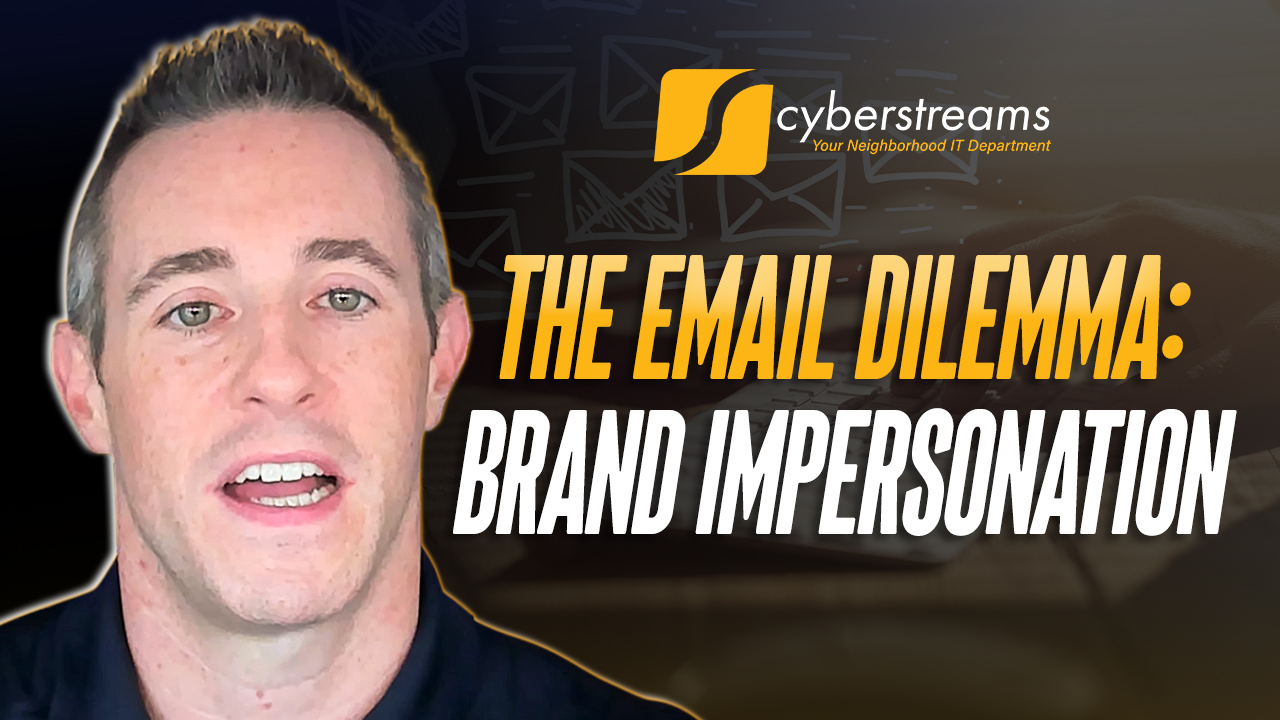
The Email Dilemma: Brand Impersonation
The Email Dilemma: Protect Your Business from Brand Impersonation
In today’s digital environment, cybercriminals are constantly evolving their tactics, with brand impersonation emerging as a prevalent threat. This technique aims to mimic trusted companies, brands, or individuals to trick recipients into revealing sensitive information.
There are two primary forms of brand impersonation:
Service Impersonation
Also known as vendor email compromise, this involves phishing emails that pretend to come from reputable companies or business applications. These cleverly crafted emails are designed to steal credentials, take over accounts, or capture personal information like credit card and Social Security numbers.
Brand Hijacking
This type of phishing attack uses fake domain names that resemble legitimate companies. Cybercriminals impersonate a business or its staff by sending emails that appear authentic but are intended to deceive recipients.
The Impact of Brand Impersonation
The scope of brand identification is vast. For example:
Spear phishing attacks use service impersonation nearly 47% of the time.
Microsoft and Office 365 credentials are among the most highly targeted, as they provide access to infiltrate organizations and launch subsequent attacks.
Weak email standards exacerbate the issue. Although technologies like DKIM, SPF, and DMARC can help authenticate domains, these standards are optional. As a result, 77% of Fortune 500 companies lack DMARC policies, leaving domain spoofing a common vulnerability. Shockingly, there are approximately 30,000 spoofing attacks daily.
Traditional email gateways are not equipped to tackle these sophisticated attacks. They lack the capability to identify legitimate branding and images or adapt to diverse service impersonation attempts. Instead, they rely on outdated, static policies that often fail to address modern threats.
A Modern Solution to Counter Brand Impersonation
To combat domain spoofing and brand hijacking, organizations can implement DMARC authentication. This approach enables businesses to:
Gain visibility into domain fraud through DMARC reporting.
Understand how their email domains are being used.
Establish DMARC enforcement policies to effectively prevent domain spoofing.
With advanced impersonation protection tools, businesses can analyze internal emails and past interactions to identify services used by their organization. These tools utilize statistical models to distinguish fake emails from genuine ones, focusing on the branding and imagery of legitimate services.
Key Takeaways and Next Steps
Here’s how you can stay vigilant and protect your organization from brand impersonation:
1. IT’s The Names You Know
Cybercriminals often impersonate trusted brands like Microsoft, WeTransfer, DHL, Chase, Netflix, Facebook, FedEx, Google, DocuSign, and eFax.
2. IT Goes by Many Names
Brand impersonation is also referred to as service impersonation, brand hijacking, vendor email compromise, brand spoofing, or domain spoofing.
3. IT Requires a Modern Approach
Adopt advanced impersonation protection tools that analyze historical and internal emails. These tools create a statistical model to identify fake emails by focusing on the branding and images of legitimate services.
Protect Your Business from Brand Impersonation Today
The rising threat of brand impersonation demands a proactive and modern approach to email security. By implementing DMARC authentication and leveraging advanced email protection tools, your organization can safeguard its reputation, prevent data breaches, and maintain the trust of your customers.
Start securing your domain today—because trust begins with safe communication.
Ready For A No-Nonsense Approach To IT?
Hire us to set your IT strategy up for sustainable success.
Learn about our proven No-Nonsense approach.
Get an IT roadmap designed specifically for you.
Fearlessly grow your business.

